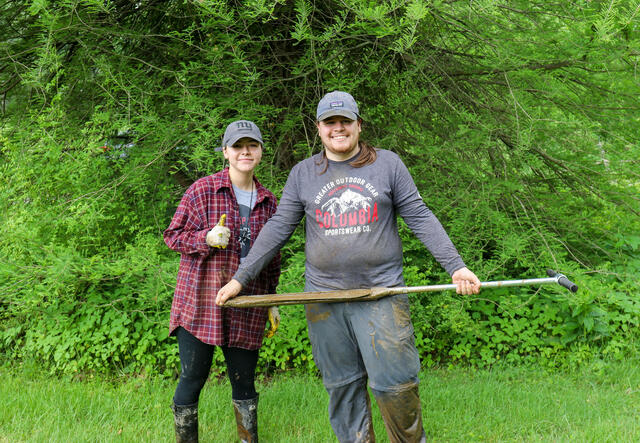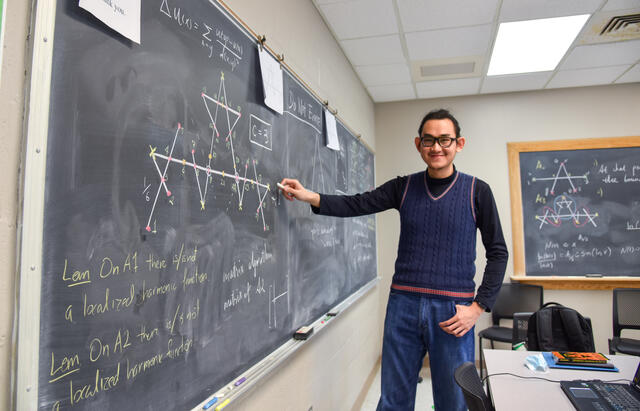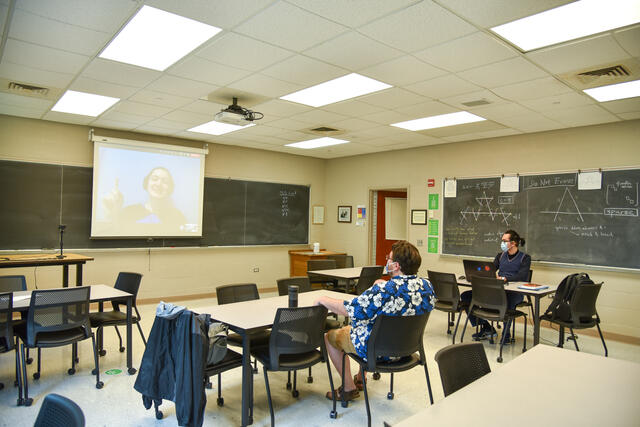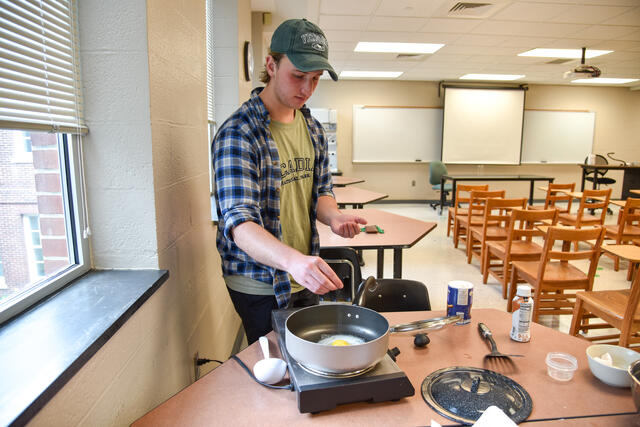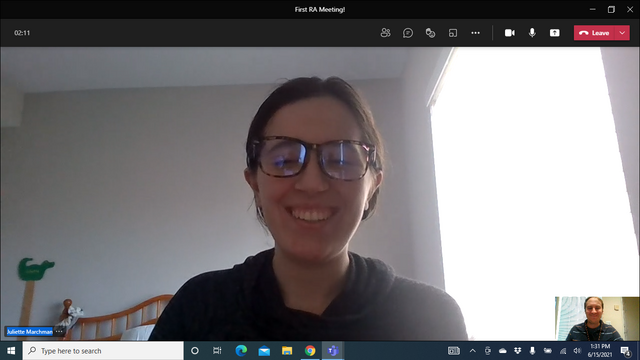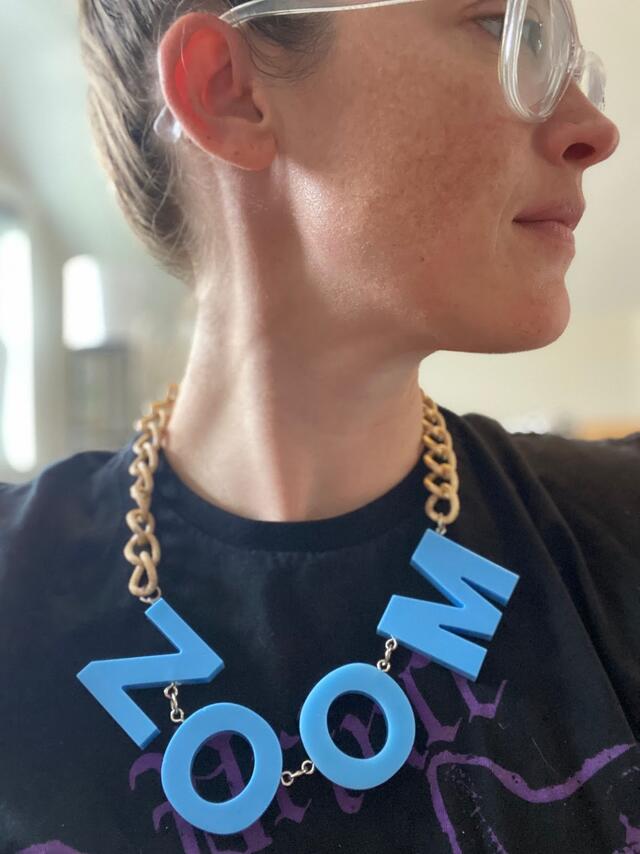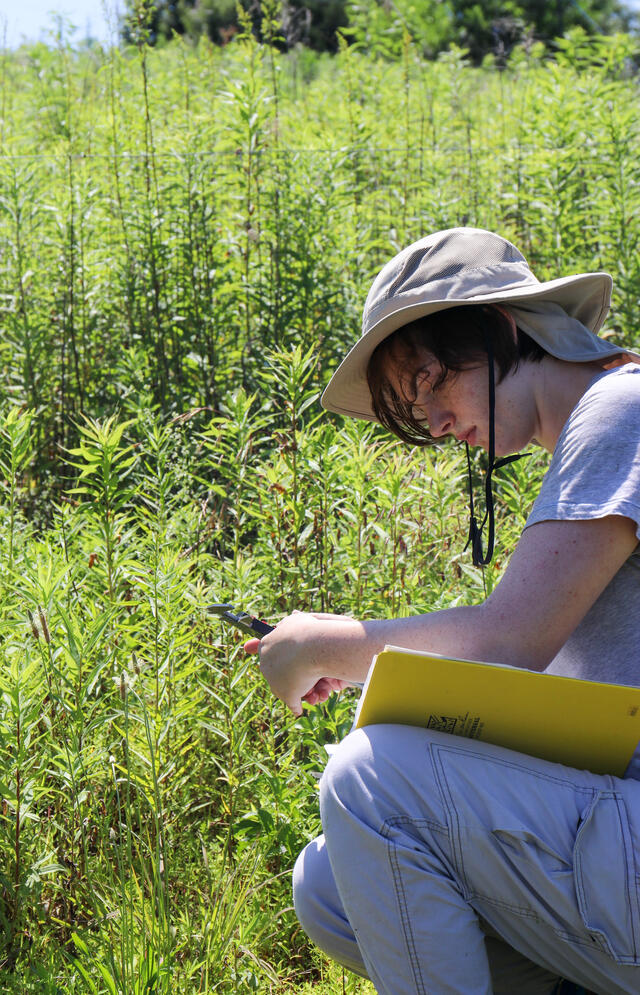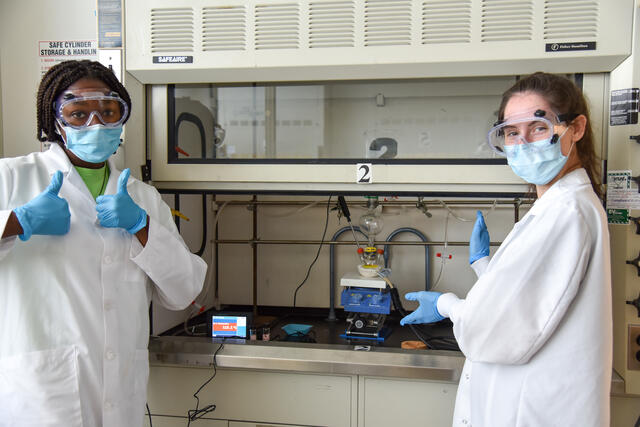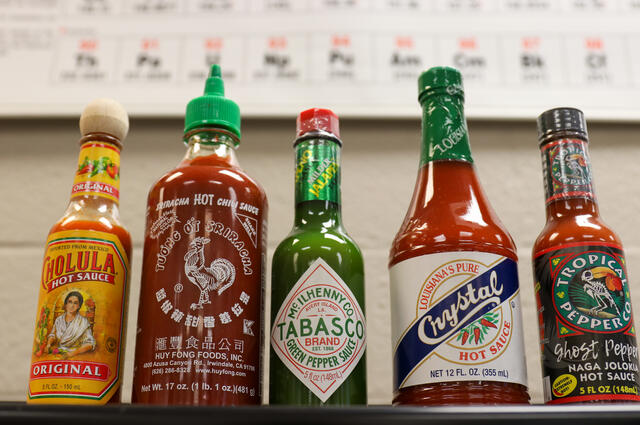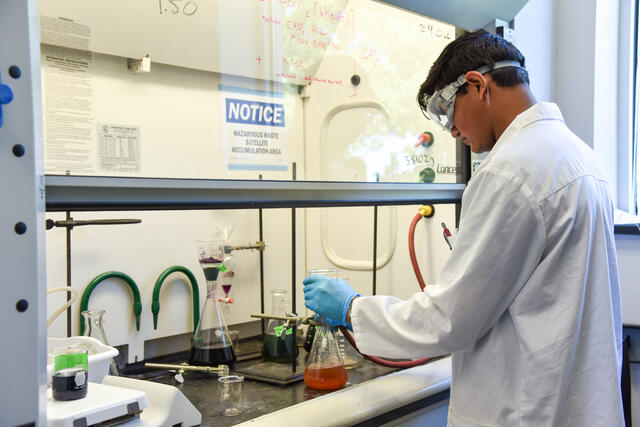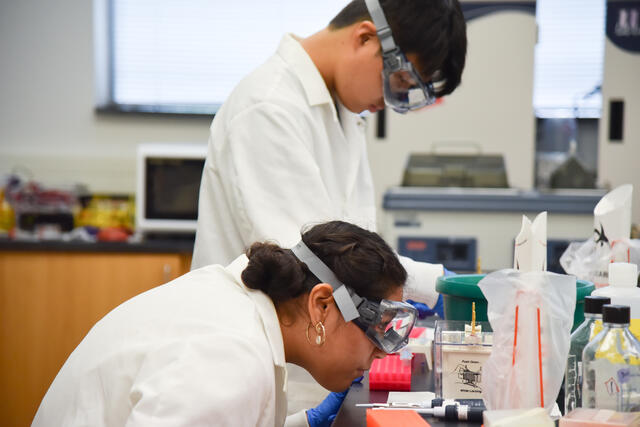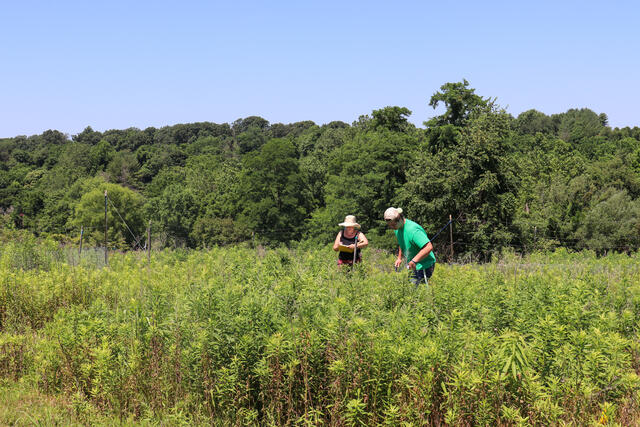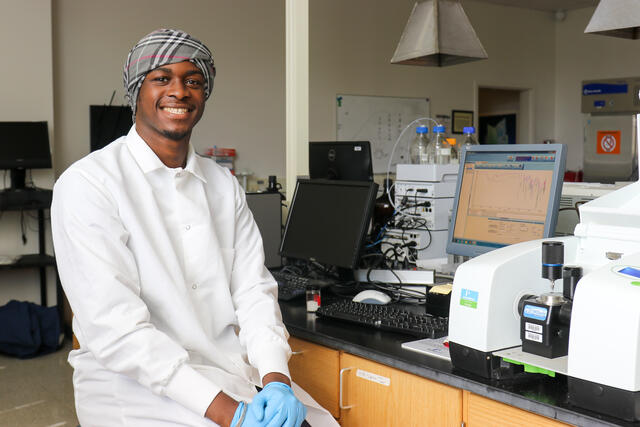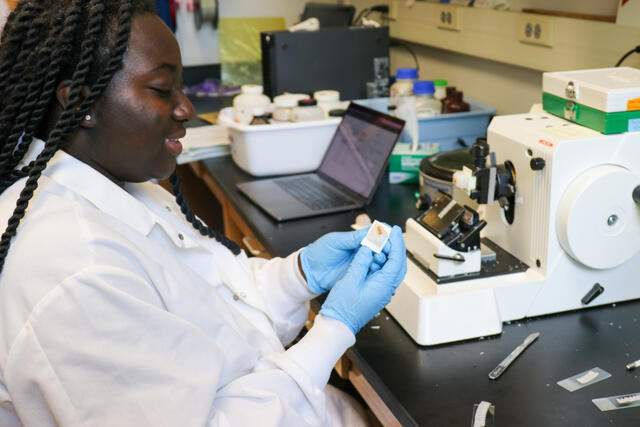Students make a difference through McDaniel’s Student-Faculty Collaborative Summer Research Program
McDaniel College students strive to make a difference in the world through the Student-Faculty Collaborative Summer Research Program. Students are learning how to solve real-world problems, whether it’s restoring local wetlands that are under threat worldwide or joining in research efforts to discover drugs to treat COVID-19 following the global pandemic. The Student-Faculty Collaborative Summer Research experience is an eight-week program for undergraduate students at McDaniel to pursue research, which is supported by donors.
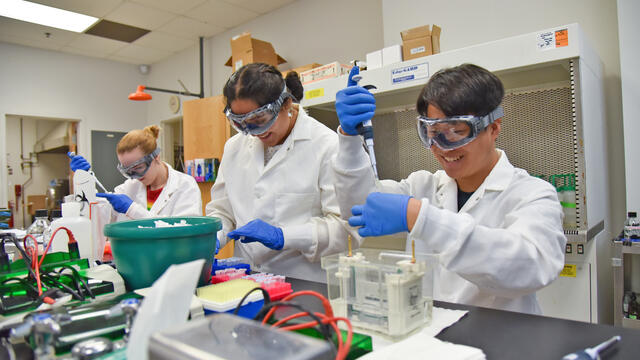
Susan Parrish, associate professor of Biology, worked on research that characterized D10 host range expansion mutants of the MVA virus with students Hailey Grzemkowski, Sarah Aleman, and Hyosik Kim.
McDaniel College students strive to make a difference in the world through the Student-Faculty Collaborative Summer Research Program.
Students are learning how to solve real-world problems, whether it’s restoring local wetlands that are under threat worldwide or joining in research efforts to discover drugs to treat COVID-19 following the global pandemic.
The Student-Faculty Collaborative Summer Research experience is an eight-week program for undergraduate students at McDaniel to pursue research, which is supported by donors. Nearly 20 professors have been leading projects ranging in fields of Art, Art History, Biology, Chemistry, English, History, and Math and Computer Science with about 50 undergraduate students this summer.
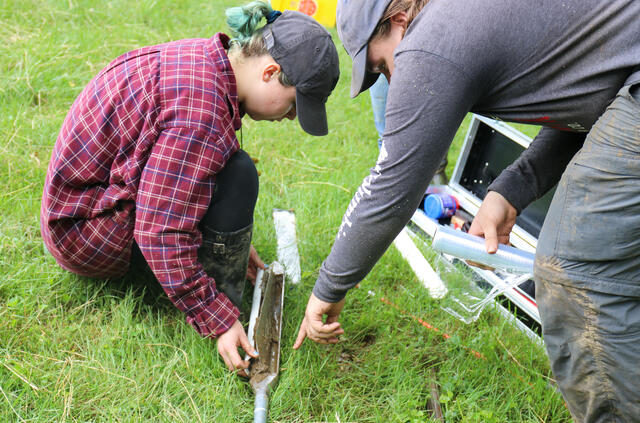
Rising seniors Hannah Keller and Colin Maglietta learned more about wetlands restoration through their research with Margaret Christie, assistant professor of Environmental Studies.
The program provides an opportunity for students to take their research beyond the classroom. While some may opt to publish their research, others are planning to take their projects to a national conference in August.
Rising seniors Colin Maglietta and Hannah Keller learned more about wetlands restoration through their research with Margaret Christie, assistant professor of Environmental Studies.
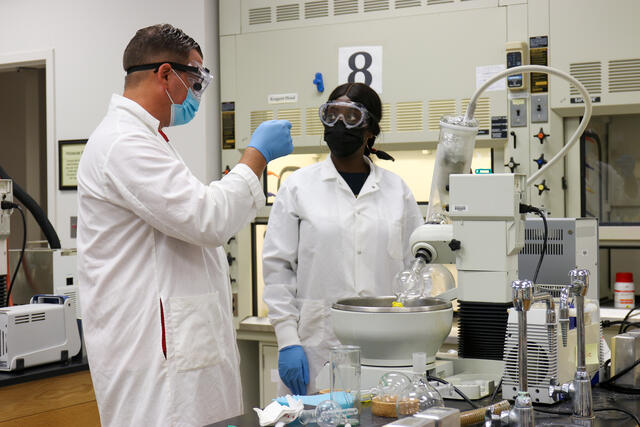
Dana Ferraris, associate professor of Chemistry, collaborated on research efforts to discover drugs to treat COVID-19 with student Princess Addo-Oboubi of Jessup, Md.
Maglietta, an Environmental Studies major, noted how wetlands are more important than people realize with benefits for the environment.
“They are incredibly under threat worldwide, so having the chance to restore one in our area that is local is a neat experience,” Maglietta added. “It’s a good thing to do.”
Keller, an Environmental Studies and Spanish double major, has enjoyed the restoration research so much this summer that it inspired her to pursue this type of work after college, potentially in Latin America.
Two groups of students spent the summer with Chemistry professors Peter Craig and Dana Ferraris on COVID-19 research, finding different ways to attack the virus. Ferraris’s group seeks to discover drugs to fight COVID-19, while Craig’s students are looking through another lens. The students’ research can be used for other viruses, not just COVID-19.
Rising senior Biochemistry major George Abbas, who is studying with Ferraris, pointed out what may be considered a failure in their findings is still a finding. It is something they learned won’t work and another piece of information, which makes their research especially unique.
"My whole purpose of coming to McDaniel was for the small school, the small class sizes, and the research," Abbas said. "This is the reason I'm at McDaniel. This research is the most important thing for my career."
For rising junior Biology major and transfer student Lavi Hotea, she has a fresh perspective to the COVID-19 research this summer after working as a dentist in Romania prior to moving here and coming to McDaniel.
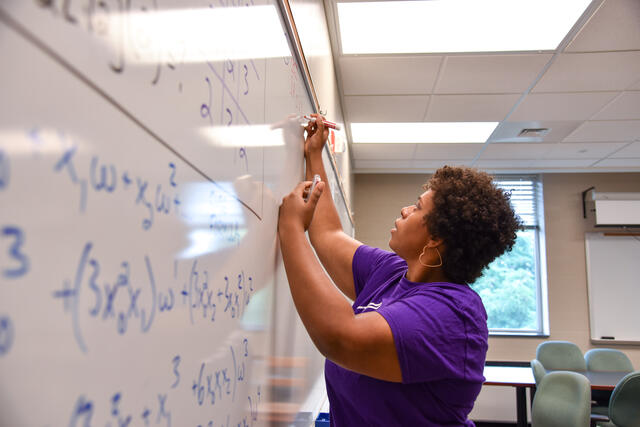
Rising junior Chandra Copes is taking her mathematical research beyond the classroom and plans to present at a virtual national conference.
“It is very exciting because we are literally making products that no one has done before,” Hotea added. "No one else in the world has made it. It is yours. Dr. Ferraris is bringing the world to this little lab and it’s just amazing.”
Rising junior Nilay Patel and rising senior Skyler Minutelli, who are both working with Craig on COVID-19 research, feel there is almost more responsibility that comes from this type of work since their research could be used for others to study in the field.
“What Skyler and I are researching can be used for other viruses, not just COVID-19,” said Patel, a Biochemistry major. “It can be anything in the future that uses zinc fingers to reproduce for replication and transmission.”
Rising juniors Chandra Copes and Kevin Rabidou are taking their mathematical research, “Generalizations of Waring’s Problem,” beyond the classroom with Spencer Hamblen, associate professor of Mathematics & Computer Science. Copes and Rabidou will present their research at a national conference, the Mathematical Association of America’s MathFest, which is Aug. 4 through 7.
“I wanted to know what it was like to do mathematical research,” said Copes, a Mathematics and Economics major with a minor in Music. “This was the perfect opportunity. I’m looking into possibly doing this as a career and going further into number theory.”
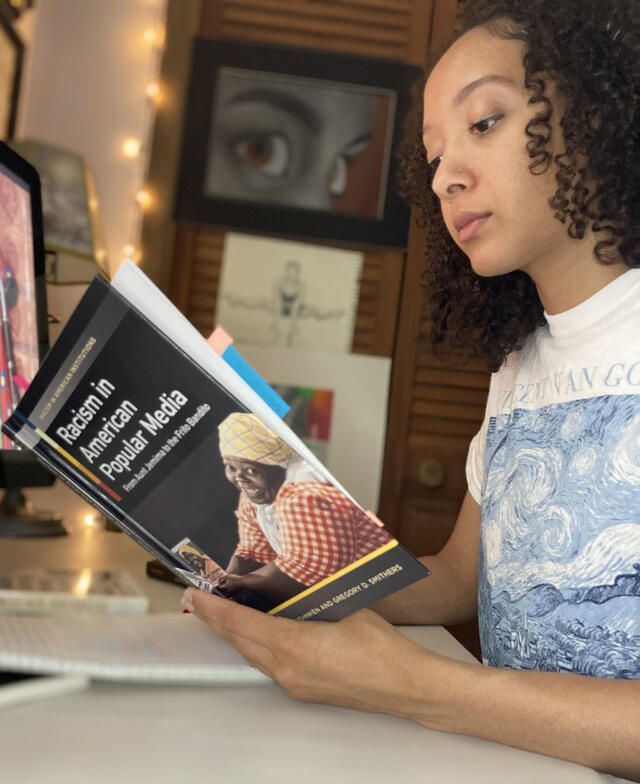
Rising senior Ezerae Ham
While the program was able to be held on campus this summer, some projects were able to be done in a virtual capacity.
Rising senior Art major Ezerae Ham has spent the summer researching more current and modern artists who use stereotypes to change the narrative and conversation with Gretchen McKay, professor of History & Art History. McKay noted how humanities research can give undergraduate students “a very real and rich influence and chance to contribute.”
“This research is meaningful to me because I think it’s important to know why some stereotypes came to be and how people are working towards not completely erasing these images but using them as a learning experience to show how they aren’t accurate representations of the past,” Ham added. “Throughout my years of studying Art, I have only learned about a handful of Black artists so I also feel as if these artists deserve to have their spot in History books just like the other pronounced artists, such as Andy Warhol and Frida Kahlo. Even though the African American artists we are researching weren’t mainstream, they still had a huge impact on the art community and movements going on at the time.”
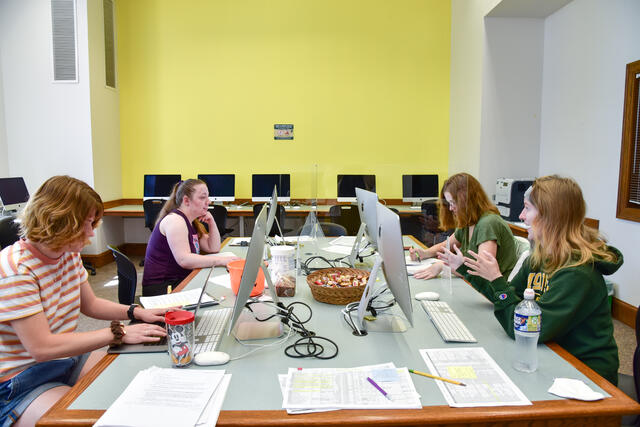
Mary Bendel-Simso, professor of English, collaborated on research about the Westminster Detective Library, which is an ongoing online project to locate and publish all short detective fiction printed in the United States before 1891, with students Micaela Champion, Rebecca Halaney, Danielle Wendt, and Cara Woolston.
Learn more about the research projects this summer:
- Mary Bendel-Simso, professor of English, collaborated on research about the Westminster Detective Library, which is an ongoing online project to locate and publish all short detective fiction printed in the United States before 1891, with students Micaela Champion of Chambersburg, Pa., Rebecca Halaney of Austin, Texas, Danielle Wendt of Ellicott City, Md., and Cara Woolston of Baltimore.
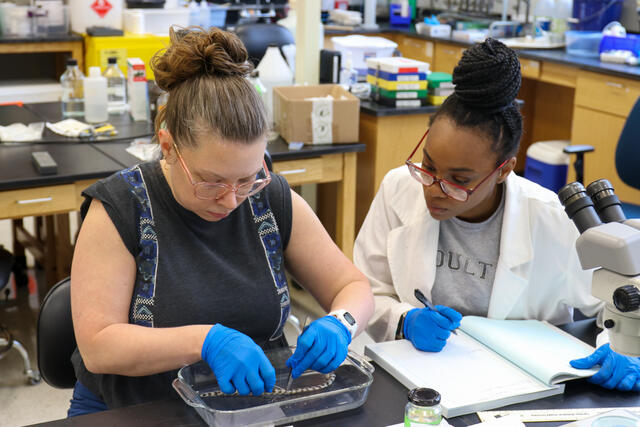
Katie Staab, associate professor of Biology, collaborated on research entitled, “The functional morphology of cartilage-like connective tissues in fish cranial joints” with McDaniel student Victoria Moore.
- Margaret Christie, assistant professor of Environmental Studies, collaborated on research entitled, “MEC Wetland Restoration – Getting Our Feet Wet” with students Hannah Keller of Arbutus, Md., and Colin Maglietta of Finksburg, Md.
- Peter Craig, associate professor of Chemistry, collaborated on research entitled, “COVID-19 Zinc Cysteine Protease Inhibition” with Patrick Keane of Germantown, Md., Skyler Minutelli of Sparrows Point, Md., Nilay Patel of Abingdon, Md., Brett Ratajczak of Abingdon, Md., and Colin Tucker of Keymar, Md.
- Elly Engle, assistant professor of Environmental Studies, worked on research entitled, “Cultivating Sustainable Food Systems at McDaniel College and Beyond” with students Kylie Baker of Frederick, Md., and Jessie Titus of Frederick, Md.
- Qin Fang, associate professor of History, collaborated on research entitled, “Mapping Ponds, Swamps, Animals, Plants, and Hydraulic Projects around the Hangzhou Bay (1640s-1900s)” with students Kyra Greenfield of Beltsville, Md., and Olivia Usilton of West Chester, Pa.
- Dana Ferraris, associate professor of Chemistry, collaborated on research efforts to discover drugs to treat COVID-19 with students George Abbas of Essex, Md., Princess Addo-Oboubi of Jessup, Md., Elva Joya of Rockville, Md., Lavi Hotea of Westminster, Md., and AnnMarie Walker of Oceanside, Calif.
- Spencer Hamblen, associate professor of Mathematics & Computer Science, worked on research entitled “Generalizations of Waring's Problem” with students Chandra Copes of Salisbury, Md., and Kevin Rabidou of Ashland, Mass.
- Cheng Huang, associate professor of Biology, collaborated on research entitled, “Genetic regulation of cdx4 in zebrafish” with Peyton Fair ‘21 of New Oxford, Pa.
- Stephanie Homan, assistant professor of Chemistry, worked on research entitled, “Synthesis and characterization of novel water soluble CdSe QDs for biomolecule detection, labeling and imaging” with students Renee Dupre of Hagerstown, Md., Alexander LaVeck of Reisterstown, Md., Frieda Mbom Anong of Montgomery Village, Md., and Chelsea Rocha of Irvington, N.J.
- Chloe Irla, assistant professor of Art, studied “Vernacular Typography” with students Laura Midkiff of Westminster, Md., and Ashley Wilder of Mount Airy, Md.
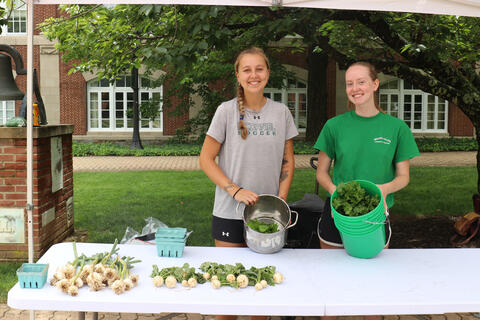
Elly Engle, assistant professor of Environmental Studies, worked on research entitled, “Cultivating Sustainable Food Systems at McDaniel College and Beyond” with students Jessie Titus and Kylie Baker.
- Holly Martinson, assistant professor of Biology, collaborated on research entitled, “Examining effects of altered nutrient, herbivore, and land use regimes on pollinator and plant communities” with students Vance Ellis of Parkville, Md., and Sophia Gilbart of Taneytown, Md.
- Gretchen McKay, professor of History & Art History, worked on research that focused on the roots of Jim Crow era stereotypes as well as more current and modern artists who use those stereotypes to change the narrative and conversation with students Ezerae Ham of Dale City, Va., and Marcus Sessoms of Halethorpe, Md.
- Paul Muhlhauser, associate professor of English, collaborated on research entitled, “Sports, Politics, and Fans: Fact Checking Your Support” with students Kaylen Buschhorn of Austin, Texas, and Grace Maglietta of Finksburg, Md.
- Susan Parrish, associate professor of Biology, worked on research that characterized D10 host range expansion mutants of the MVA virus with students Sarah Aleman of Millsboro, Del., Hailey Grzemkowski of California, Md., and Hyosik Kim of South Korea.
- Michael Polen, lecturer of Chemistry, collaborated on research entitled, “Development of analytical methods for assessing soil and water quality at McDaniel Environmental Center” with students Alina Cromer of Westminster, Md., Kramoh Mansalay of Darby, Pa., and Kara McKenna of Sykesville, Md.
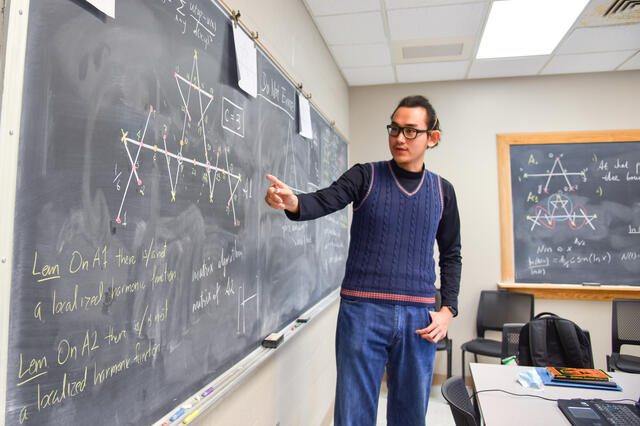
Benjamin Steinhurst, associate professor of Mathematics & Computer Science, collaborated on research entitled "Fibonacci Fractals and Recursively Stable Words" with student Stanley Gao.
- Stephen Robertson, senior adjunct lecturer of Chemistry, worked with student Collin Wainwright of Lebanon, N.H., to develop lab techniques for a new food chemistry course for first-year students that will be offered at the college this fall. Robertson and Wainwright are finding ways to combine the art of cooking and the science behind it at a baseline level for students to take away meaningful lessons from the course.
- Katie Staab, associate professor of Biology, collaborated on research entitled, “The functional morphology of cartilage-like connective tissues in fish cranial joints” with students Jessica Kam of Baltimore and Victoria Moore of Baltimore.
- Benjamin Steinhurst, associate professor of Mathematics & Computer Science, collaborated on research entitled "Fibonacci Fractals and Recursively Stable Words" with students Stanley Gao of China and Pauline Tillotson of Herndon, Va.
- Paul Zajac, assistant professor of English, worked on research entitled, “Making Peace in English Renaissance Literature” with student Juliette Marchman of Bel Air, Md.
